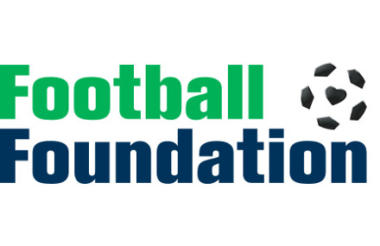The top performing charity in this month’s review of the haysmacintyre / Charity Finance 250 Index is the Football Foundation, which has more than doubled its annual income to £68.4m in the financial year ending 31 May 2017.
The increase results from a new long-term National Football Facilities Strategy to direct all facility investment via the Foundation. This was developed in 2016 by the Foundation’s funding partners, namely the Football Association (FA), the Premier League and the government via Sports England, and approved in February 2017. As the agreement is subject to Premier League and FA broadcasting deals, it will be reviewed every three years.
Another strong performer in the quarter under review is Mercy Corps Europe (MCE), which reported a 55 per cent increase in annual income to £93.1m in the financial year ending 30 June 2017. The increase results mainly from a 226 per cent increase in funding from the European Commission (EC) and European Civil Protection and Humanitarian Aid Operations (ECHO), which was mostly for the purposes of humanitarian relief and development work related to the Middle East and Syrian refugee crisis.
As well as boosting overall income levels, the increase in EC/ECHO funding serves to reduce the charity’s reliance on UK government funding. This fell from 57 per cent of all institutional funding in 2016 to 37 per cent in 2017. Donor diversification and the expansion of European funding sources is a key strategic objective of MCE, which has set up a new office in Geneva to mitigate the impact of the UK’s exit from the European Union.
Both the Football Foundation and MCE owe their success to the strong contribution to income made by charitable activities, which is the top performing income stream this quarter. Conversely, the worst performing income stream this quarter is voluntary income. This is due largely to a 70 per cent fall in fundraising income at the Rhodes Trust – Public Purposes Fund, which closed its Campaign for the Second Century in 2016/17 having achieved its £150m fundraising target (see our Index review in the May 2018 edition for more on this).
However, the fact that only five of the 26 charities with financial year ends falling in the second quarter report an increase in voluntary income suggests that the fundraising environment is generally becoming more challenging.
It is against this backdrop that the results of BBC Children in Need are striking, not simply because the children’s charity reported a 6 per cent increase in voluntary income but also because voluntary income accounts for over 90 per cent of its total income.
Launched in 1980, BBC Children in Need is the oldest of a handful of UK telethons. Two others are run in alternate years by Comic Relief: Red Nose Day, which was launched in 1985, and Sport Relief, which launched in 2002. Meanwhile, Stand up to Cancer was launched by Cancer Research UK and Channel 4 in 2012.
As fundraising activities, telethons enjoy obvious advantages such as high exposure and strong brand recognition. However, the charities that run telethons can risk being overreliant on them. This is a particular worry given the long-term decline in traditional TV audiences, as terrestrial channels come up against increasing competition from alternative media channels and platforms.
The most recent BBC Children in Need appeal in November 2017 raised a record-breaking £50m, up 7 per cent on the previous year. The follow-on income generated by the campaign in the year to 30 June 2018 has yet to be established but in 2016/17 followon income comprised 24 per cent of appeal income, down from 35 per cent in 2015/16.
According to the 2016/17 annual report, “the trustees have reflected on the changing balance of income for the charity, both in terms of keeping pace with changes in television viewing habits, which have tended to switch from live to on-demand, but also in the significant success of the charity’s initiatives supported by Lloyds Banking Group, Asda and the BBC’s Countryfile. Diversification of income will continue to be a key theme.”
A key area for development will be relationships with corporate supporters. Fundraising partnerships with Boots, Greggs and the Post Office, as well as Lloyds Banking Group and Asda, contributed 28 per cent of appeal income in 2016/17.
Similarly, Comic Relief announced a restructuring programme earlier this year aimed at engaging new audiences on different platforms, including digital and social media, and organising more events and year-round activity, so as to reduce its reliance on the telethon model.









